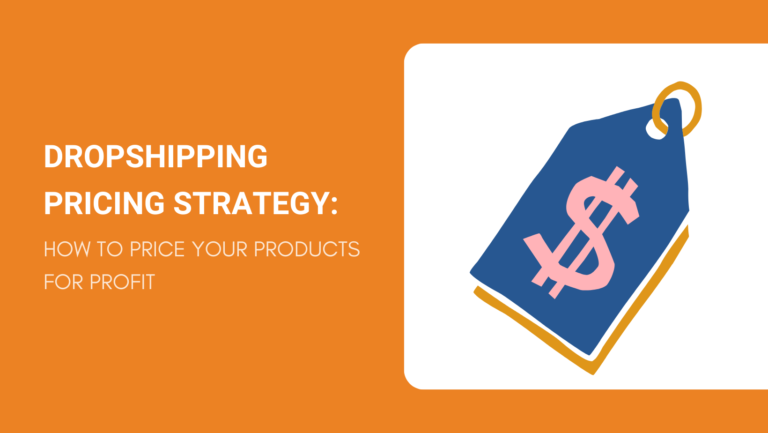In the world of dropshipping, crafting effective pricing strategies is crucial for driving traffic, attracting customers, and maximizing profit margins.
Understanding the economics of dropshipping plays a significant role in determining appropriate price points for your products.
With that being said, it’s essential to take various factors into consideration, such as product tier, target audience, and costs associated with running an online store.
By doing so, you set the foundation for a successful pricing strategy that works best for your specific niche.
In this article, we’ll dive into the basics of dropshipping and how to implement efficient pricing strategies to keep your online business thriving.

Understanding Dropshipping Economics
Dropshipping is an e-commerce business model where you, as an online store owner, act as a middleman between wholesale suppliers and customers.
In this model, you don’t need to worry about inventory management and fulfillment, which can be a significant advantage to new entrepreneurs.
As a dropshipper, your main duties include setting up your online store, showcasing products sourced from wholesale suppliers, and focusing on marketing and customer service.
However, to run a successful dropshipping business, it’s essential to understand the economics behind it.
One of the most important aspects of dropshipping economics is your cost structure, which consists of product costs, shipping fees, and platform fees. Let’s discuss how each component affects your dropshipping business:
Product Costs
These are the costs you pay to your vendors for the products you sell in your online store.
You need to purchase items at a wholesale price, which allows you to sell them at a higher retail price to your customers.
The difference between the wholesale price and the retail price is your profit margin.

Shipping Fees
Since you’re not handling fulfillment and logistics yourself, your vendors handle shipping your products to your customers.
Shipping costs are typically included in the product cost, but you need to keep track of them to ensure you’re still making a profit after all fees are accounted for.
Platform Fees
If you’re using an e-commerce platform to create and run your online store, you’ll usually need to pay a monthly subscription fee.
Costs vary depending on the platform, its features, and your store’s requirements. Examples of popular e-commerce platforms are Shopify, WooCommerce, and BigCommerce.
What Is a Dropshipping Pricing Strategy?
A dropshipping pricing strategy is a plan you develop for setting the retail prices of your products in a way that covers all your business costs and brings in a profit for you.
This strategy aims to optimize your prices for the right balance of affordability and profitability.

To create a successful pricing strategy, you must first consider the costs involved in your dropshipping business. This includes expenses like supplier fees, shipping costs, and marketing expenses.
Remember to also factor in your own desired profit margin. By considering all these cost components, you can set a retail price that ensures you earn a profit on every sale.
Various pricing strategies can be employed in dropshipping, and we’ll tackle most of them in the following section.
Dropshipping Pricing Strategies for Low-Ticket Products ($0-$10)
1. Fixed Markup on Cost
For low-ticket products that range from $0 to $10, you can use a fixed markup strategy to set your retail prices. This involves adding a fixed percentage or dollar amount to the cost of each product to determine the final selling price.
To do this, first calculate the product cost by considering the supplier’s price and any additional shipping or handling fees. Then, apply your fixed markup percentage to that cost.
For example, if a product costs you $3 and you decide on a fixed markup of 100%, your retail price would be $6 ($3 x 2). This approach allows you to maintain consistent profit margins while ensuring your products remain competitively priced.

2. Free Plus Shipping Strategy
Another popular pricing strategy for low-ticket products is the “free plus shipping” model. This strategy involves offering the product for free and only charging for shipping.
Customers are attracted to the idea of receiving a free item, and your revenue is generated through the shipping cost. To make this work, you’ll need to set a shipping fee that covers both the product cost and your desired profit margin.
For instance, if a product costs $1 and the shipping fee is typically $2, you can charge $4 for shipping. In this case, you’re giving away the product for “free,” yet still making a $1 profit from each sale.
This strategy can be particularly effective for attracting impulse purchases and creating a sense of urgency among customers.
Dropshipping Pricing Strategies for Medium-Ticket Products ($10-$25)
1. Cost-Based Pricing
This strategy involves calculating the total cost of offering a product, including the purchase and shipping price, and adding your desired profit margin. To apply cost-based pricing to your medium-ticket products, follow these steps:
- Make a list of all your costs associated with selling the product, such as purchasing from the supplier, shipping, and other operational expenses.
- Determine the markup percentage you want to apply. This could be based on industry standards or the desired profit margin for your dropshipping business.
- Multiply your costs by your desired markup percentage and add it to the total cost of obtaining the product.
For example, if a product costs you $15 (including shipping) and you want to apply a 35% markup, your selling price would be $20.25 ($15 x 1.35).

2. Bundle Pricing
Bundle pricing is a great way to increase the perceived value of your medium-ticket products while also appealing to customers looking for better deals.
Combining related items and offering them at a special price can entice shoppers to purchase more products from your store.
To implement bundle pricing, follow these steps:
- Select products that complement each other and make sense to be bundled together. For example, a kitchen gadget set or a skincare routine kit.
- Determine the total cost of the bundled items, including shipping and other related expenses.
- Add a reasonable markup that still offers your customers an attractive discount compared to buying each item individually.
Dropshipping Pricing Strategies for High-Ticket Products ($30+)
1. Perceived Value Pricing
Perceived Value Pricing is a strategy that takes into account the perceived value of a product in the eyes of the customers. This means you need to consider factors like product quality, overall brand image, and customer experience.
Here’s a simple process to follow:
- Identify your target market and research their preferences, expectations, and price sensitivity.
- Examine your competitors’ products to determine how they price their high-ticket items and what factors influence their customers.
- Analyze your product’s unique features and identify what sets it apart from competitors, such as higher quality materials, innovative designs, or exceptional customer service. Use this information to justify a higher price.
- Test different price points to find the optimal price that yields the maximum profit without sacrificing customer satisfaction.
Keep in mind that perceived value pricing is an ongoing process, and you will need to continually adapt and reevaluate your pricing based on changing market trends, customer feedback, and competition.

Premium Pricing is another popular strategy for high-ticket items, which focuses on setting prices higher than the competition to convey exclusivity and luxury. Apply this strategy by following these steps:
- Establish a luxury brand image and effectively communicate this to your target audience through high-quality product images, detailed descriptions, attractive packaging, and superior customer service.
- Highlight your product’s uniqueness, quality, and innovation to justify the premium price and make customers believe they are receiving a product with exceptional value.
- Evaluate your competition to ensure that your premium price is not so high that it becomes unattractive to potential customers. It’s crucial to strike a balance between exclusivity and affordability.
- Monitor your sales performance and customer feedback to adjust your pricing if needed. Sometimes, minor tweaks can result in significant improvements to your overall revenue.
Other Common Dropshipping Pricing Strategies
1. Keystone Pricing
Keystone pricing is a simple and straightforward strategy: you just double the price you paid for the product. This is an easy way to ensure you have a profit margin.
For example, if you purchase a product for $10, you’ll sell it for $20. Keep in mind that this strategy doesn’t account for other costs, such as shipping and taxes.
2. Tiered Markup on Cost
Tiered markup on cost involves setting different markup percentages based on the product’s cost. This allows you to use a higher markup on lower-priced items while lowering the markup for more expensive items.
For example:
- If a product costs $1-$10, apply a 100% markup.
- If a product costs $11-$100, apply a 75% markup.
- If a product costs $101 and above, apply a 50% markup.
Adjust your percentages to fit your business needs and profit goals.

3. Competition-Based Pricing
Competition-based pricing involves researching what your competitors are charging for similar products and pricing your items accordingly.
This can help you stay competitive in the market. But remember, don’t just copy the price; consider your costs and desired profit margins as well.
4. Psychological Pricing
Psychological pricing is about appealing to customers’ emotions and perceptions. Most commonly, you’ll see prices ending in .99 or .95.
This subtle difference can make an item seem cheaper to shoppers. You can experiment with different price endings to find the most effective one for your target audience.
5. Dynamic Pricing
Dynamic pricing involves adjusting prices to react to market fluctuations, competitor prices, or current demand.
This is commonly used by airlines and hotels, but you can also apply it to your dropshipping business with the help of pricing automation tools, ensuring you maximize your profits.

6. MAP-Based Pricing
Minimum Advertised Price (MAP) is the lowest price a retailer can advertise a product for sale. Manufacturers set this price to protect their brand’s image and value.
As a dropshipper, you should adhere to MAP policies to maintain good relationships with your suppliers and avoid any potential legal issues.
7. Manufacturer Suggested Retail Price (MSRP)
Lastly, you can use Manufacturer Suggested Retail Price (MSRP) as your pricing strategy. MSRP is the price suggested by manufacturers for their products.
It’s important to note that following this strategy may not always lead to the best profit margins, as other factors like market demand and competitors can impact the effectiveness of the MSRP.
Consider using this strategy in combination with others to find the right balance for your business.
Factors to Consider When Pricing Dropshipping Products
Market Demand
You need to understand the demand for your products in the market. If your products are in high demand, you can set a higher price. However, if the demand is lower, you may need to lower your prices to attract customers.
Competition
Analyze your competitors’ prices to determine how you can differentiate yourself.
If your competitors are selling similar products at lower prices, you should consider how to provide more value to justify a higher price.
Conversely, if your competitors have higher prices, you may be able to win customers with lower prices.
Perceived Value
Your product’s perceived value is how much customers believe it is worth. Ensure your pricing reflects the value customers associate with your product, taking into account product quality, branding, and customer reviews.
Shipping and Fees
Consider the costs of shipping and other fees associated with your products. These costs can impact your profit margin, so factor them into your pricing strategy.
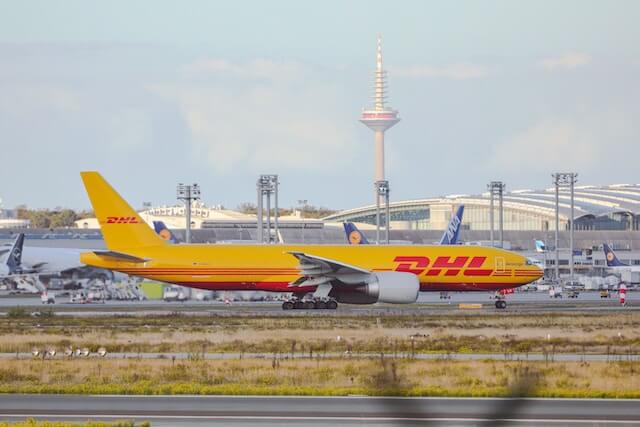
Product Niche
The niche market your products are targeting can also affect your pricing. For example, luxury or specialty products typically demand higher prices than mass-market items.
Supplier and Manufacturer
Consider the costs of sourcing products directly from your suppliers and manufacturers. Doing so can give you more control over pricing and make you more competitive.
Overhead Costs
Don’t forget to account for the costs associated with running your dropshipping business, such as website hosting, marketing, and customer service. These costs should be factored into your pricing to ensure profitability.
Seasonal Trends
Certain product categories can experience fluctuations in demand due to seasonal trends. Adjust your pricing accordingly to capitalize on peak season and stay competitive during slower periods.
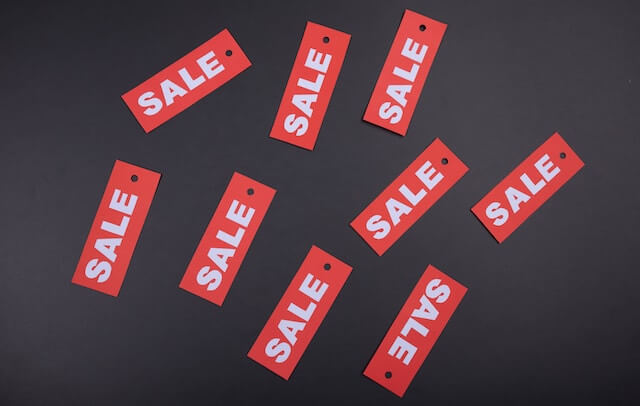
Discounts and Promotions
Offering discounts or promotional deals can attract customers and boost sales. However, ensure that your base pricing still allows for profit even when offering discounts.
Returns and Refunds
Be prepared for the costs of handling returns and refunds. These costs can impact your overall pricing strategy, so ensure that your prices are set to account for potential returns.
Calculating Dropshipping Profit Margins
To effectively price your dropshipping products, you need to understand how to calculate your profit margins.
Follow these simple steps to determine your profit margins and ensure your dropshipping business remains profitable.
Step 1: Understand the Basics
When starting a dropshipping business, it’s essential to consider both your revenue and the cost of goods sold (COGS) to price your products accurately. By focusing only on maximizing revenue, you may neglect the importance of managing your costs.
Understanding these two key factors will help you create a pricing strategy that balances both profit and competitiveness.
Revenue
Revenue refers to the money you earn from sales.
For a dropshipping business, your revenue is determined by the price the customers pay for your products minus the charges deducted by payment gateways or marketplace fees.
Setting an optimal price for your offerings is crucial to maximize the revenue while maintaining a competitive edge in the market.
Cost of Goods Sold (COGS)
COGS involves all the costs associated with acquiring and delivering the products from your supplier to the customer. These expenses include the dropshipping fee, product wholesale price, packaging cost, and shipping fee.
Estimate the COGS accurately to ensure you cover your costs and make a profit with every transaction.
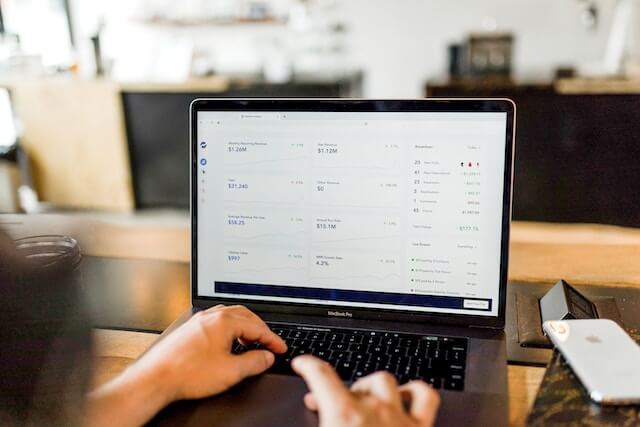
A misconception about dropshipping is that there’s a low initial investment; however, you should be prepared for ongoing expenses related to salaries and advertising.
When pricing your dropshipping products, focus on both your revenues and your COGS. Find a balance between attracting customers with competitive pricing and ensuring you cover your costs while generating profit.
Establish a price range that works for your business model, keeping in mind that a standard dropshipping store’s profit margin usually falls between 10 to 25%.
Now that you have a basic understanding of these two crucial elements, you’re well on your way to developing a winning pricing strategy for your dropshipping business.
Step 2: Determine and Calculate COGS per Unit
When starting your dropshipping business, it’s crucial to determine your Cost of Goods Sold (COGS). COGS include all the costs you’ll incur to sell your products.
Let’s focus on the three main components of COGS: Product Cost, Shipping Cost, and Transaction Fees.
Product Cost
This is the amount you pay your supplier for each product you sell.
Always negotiate with suppliers to get the best possible product price, allowing for a more competitive retail price and higher profit margins.
Keep track of the product cost, as it’s a significant factor in calculating your COGS.
Shipping Cost
As a dropshipper, you must also consider the cost of shipping products from your supplier to the customer.
Shipping costs can vary depending on the package’s destination, weight, and dimensions. It’s essential to account for these costs when setting your retail prices.
To minimize shipping costs, you can consider working with suppliers who offer free or discounted shipping or are located closer to your target markets.
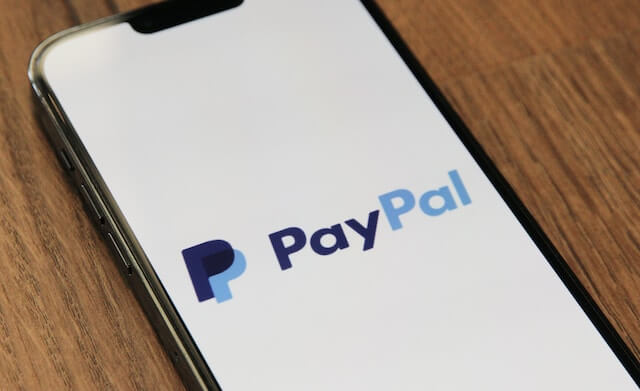
Transaction Fees
Don’t forget about transaction fees associated with online sales. These fees include payment processing charges from platforms like PayPal or Stripe, as well as fees charged by your e-commerce platform (e.g., Shopify, WooCommerce).
Some e-commerce platforms charge a flat monthly fee, while others charge a percentage per transaction. Compare the fees and choose the e-commerce platform and payment processing options best suited to your business needs.
Step 3: Calculate Gross Profit
Calculating gross profit is an essential step in pricing your products as a beginner dropshipper.
First, you need to determine your revenue. That’s simply the money you receive from your customers when they purchase your products. And don’t worry, the process isn’t as complicated as it might sound.
Now, subtract the Cost of Goods Sold (COGS) from your revenue. COGS includes all the expenses related to the production and distribution of your products, such as manufacturing, packaging, and shipping costs.
Remember that calculating COGS accurately is crucial for understanding how profitable your dropshipping business is.
So, to calculate your gross profit, simply follow this formula:
Gross Profit = Revenue – COGS
By calculating gross profit, you’ll have a clearer picture of how much money your dropshipping business is generating before considering other expenses like marketing and administration costs.
This information helps you set competitive prices for your products without sacrificing profit.

Step 4: Calculate Gross Profit Margin
Now that you have an idea of how to price your dropshipping products, it’s time to calculate your gross profit margin.
This is an essential step to determine whether your pricing strategy is effective and brings in good returns. To calculate your gross profit margin, use the following formula:
Gross Profit Margin (%) = (Gross Profit / Revenue) × 100
Let’s put this formula into practice with a sample calculation.
Imagine you’re selling a product for $25, and it costs you $10 to source it from your supplier. Your gross profit would be $15 ($25 revenue – $10 cost). Now let’s calculate the gross profit margin:
Gross Profit Margin (%) = ($15 Gross Profit / $25 Revenue) × 100
Gross Profit Margin (%) = 60%
In this example, your gross profit margin is 60%, which is considered healthy for a dropshipping business. Aim for a profit margin between 15% and 20% as a guideline.
It’s important to regularly calculate your gross profit margin for each product in your store. This will help you identify any issues in your pricing strategy and make necessary adjustments.
Step 5: Account for Additional Costs
As a beginner dropshipper, it’s essential for you to consider various additional costs when pricing your products.
Understanding these expenses will help you set a more accurate and profitable price point. In this section, we’ll discuss some of the common costs you should account for.
Marketing Costs
To attract customers to your online store, you’ll likely need to invest in marketing efforts such as content creation, social media advertising, and search engine optimization.
Depending on your budget and marketing strategy, these costs can vary, but it’s important to factor them in when determining your product pricing.

Website Hosting Fees
Your online store needs a home on the internet, which means you’ll have to pay for website hosting.
The cost of hosting can range from a few dollars per month to hundreds, depending on the platform and level of service you choose.
Advertising Expenses
In addition to investing in marketing efforts, you might also decide to allocate funds to online advertising campaigns.
This can include sponsored posts, pay-per-click ads, or even influencer partnerships.
As with marketing costs, advertising expenses can vary greatly but need to be considered when setting your product prices.
Subscription Fees for E-commerce Platforms
Depending on the platform you choose for your dropshipping store, you may need to pay monthly subscription fees.
Some popular platforms like Shopify and WooCommerce offer different plans with varying costs. Don’t forget to account for these fees when determining your product pricing.
Step 6: Calculate Net Profit
In this step, you’ll learn how to calculate the net profit for your dropshipping products. By understanding net profit, you can make better decisions about pricing your products and maximizing your earnings.
First, let’s understand the formula for net profit:
Net Profit = Gross Profit – Total Expenses
Gross profit represents the difference between the selling price and the cost of goods sold (COGS). Total expenses include all the operational costs of running your dropshipping business, such as marketing, shipping, and any platform fees.
To calculate your net profit, first determine your gross profit. This can be done by subtracting the COGS (cost you pay to the supplier) from the selling price.

For example, if your product costs $10 from your supplier, and you sell it for $25, your gross profit is $15 per product.
Next, calculate your total expenses. This should encompass all the costs of running your business, such as advertising, shipping, and payment processing fees.
Remember to consider the expenses that occur on a per-product basis, as well as those that are ongoing, like monthly costs for e-commerce platforms or marketing tools.
Once you have both your gross profit and total expenses calculated, simply subtract the total expenses from the gross profit. This will give you your net profit. For example:
- Gross Profit: $15 per product
- Total Expenses: $5 per product
- Net Profit: $15 – $5 = $10 per product
Step 7: Calculate Net Profit Margin
To calculate your net profit margin, you’ll want to start with the formula:
Net Profit Margin (%) = (Net Profit / Revenue) × 100
This will give you a percentage representing how much of your revenue is actual profit after covering all your expenses.
Once you have both your net profit and total revenue, it’s time to apply the formula.
Simply divide your net profit by your total revenue and multiply by 100. The result is your net profit margin. This number will help you understand how well your pricing strategy is working and whether you’re on the right track for making sufficient profits.

For example, if your net profit is $500 and your total revenue is $2,500, your net profit margin would be (500 / 2,500) × 100 = 20%. This means that 20% of your revenue is actual profit.
As a dropshipper, it’s crucial to keep track of your net profit margin, so you can adjust your pricing strategy accordingly.
With a higher net profit margin, you may have room to offer discounts or promotions to drive more sales, while a lower margin may indicate that you need to revise your product pricing or find ways to reduce costs.
Frequently Asked Questions
What Is the Ideal Profit Margin for Dropshippers?
The ideal profit margin for dropshippers varies depending on the niche and product cost. However, on average, the profit margin falls between 15% and 20%.
You should aim for a balance between competitive prices and a reasonable profit to maintain a healthy business.
What Are Some Common Pricing Strategies for Beginners?
When starting out in dropshipping, it’s essential to consider different pricing strategies. Here are a few common methods:
- Cost-based pricing: Set your prices by adding a specific markup to the cost of the product.
- Competitor-based pricing: Analyze your competitors’ prices and adjust yours accordingly.
- Value-based pricing: Determine the perceived value of your product to the customer and set the price based on that.
Remember to keep your target audience and niche in mind when choosing a pricing strategy, as these will influence the perceived value and willingness to pay.
How to Price Dropshipping Products with Different Variants?
When pricing products with different variants, consider factors like the cost of production, demand, and unique features across the different variants.
Ensure that the cost difference reflects the value added or removed by each variant.
Be consistent in your approach, which can help customers understand the pricing structure better.
What Is the Role of Product Research in Determining Prices?
Product research is crucial in determining prices for your dropshipping business. It helps you identify trends, demand, and competition in your chosen niche.
Conduct thorough research to gather information on your competition’s pricing strategies, product quality, and customer preferences.
This data will allow you to determine a suitable pricing strategy and position your products effectively in the market.
Dropshipping Pricing Strategy: A Recap
As a beginner in the dropshipping business, understanding the various pricing strategies is essential to maximize your revenue and profitability.
It’s crucial to determine the right profit margin for your products, considering various factors like product costs, shipping, and competitors’ prices.
Remember, your pricing strategy plays a crucial role in attracting customers and ensuring the profitability of your dropshipping business.
Don’t hesitate to experiment with different strategies, analyze their impact on your revenue, and refine your approach to find the best fit for your business.
As you build and grow your dropshipping business, if you need help sourcing or dropshipping quality products from China, feel free to request a sourcing quote from us at NicheDropshipping. We’re here to support you in your journey to success!
